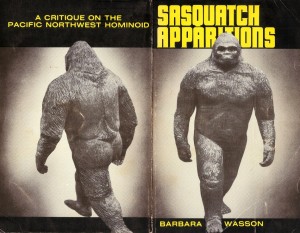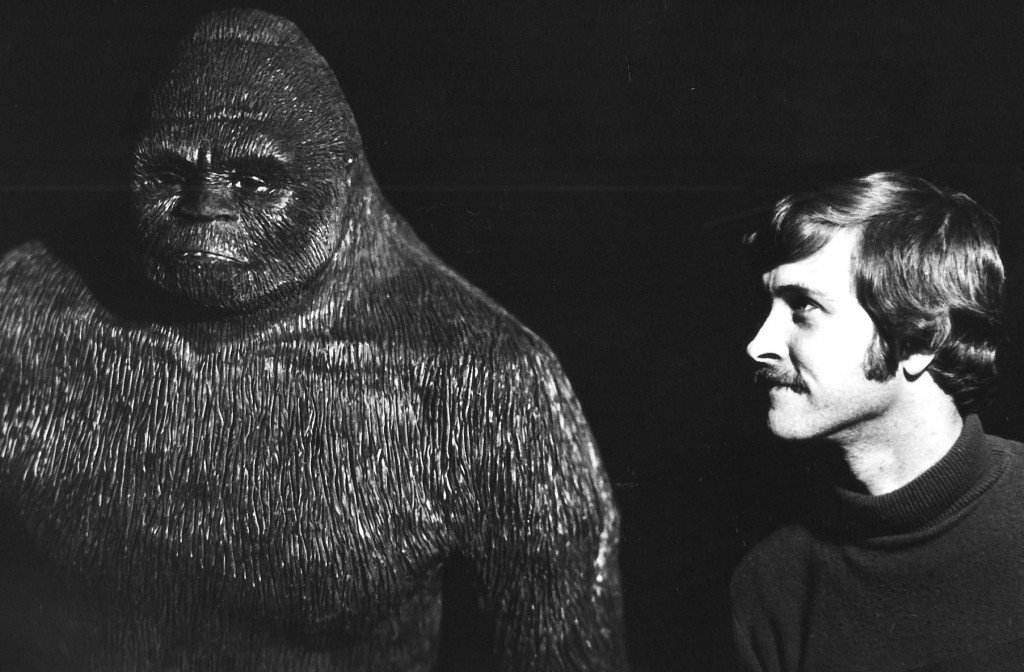When I got back from the war in Vietnam in 1971, the Marine Corps found itself with a surplus of junior grade officers like myself and offered us an early out from our three-year commitment if we could show proof of having been accepted into some academic program. I had friends in Vancouver, British Columbia, at Simon Fraser University who loved the school and the local scenery.
I already had a B.A. in Fine Arts from the University of Dallas. I had taken courses in film at the University of Southern California before the War, and my experience had left me disillusioned with the ugly realities of making movies in the Hollywood of that day.
But I had found in the Marine Corps that being a teacher, which had become my primary function in peace time, was very gratifying, so I applied to a program leading to an elementary level teaching certificate. Long story short, I became a Canadian for 5 years, first as a student, then as a school teacher.
I had been interested in the search for evidence of the Sasquatch (Canadian for “Bigfoot”) for years so I connected up with the local network of investigators. And they were interested in me, because I had majored in sculpture in college. It seemed they were comparing notes with Russian scientists who were investigating the same phenomenon in the Caucasus Mountains where the creatures were called “Almasti.” The Russians had a statue of their critter and the Canadians were jealous. So I got materials together — black Plasticine clay, copper armature, small brown glass eyes and photos of the reconstructed skull of gigantopithicus erectus, a fossil hominid from China which offered the best anthropological precedent for a giant bipedal ape — and I went to work.
The investigators — newspapermen, hunters, writers and Mounties (alas, no longer wearing red suits like Dudley Do-Right, I was so disappointed) — were enthusiastic in their support, supplying me with photos, casts of footprints, eyewitness descriptions and the famous Bluff Creek film clip. After a few months I had an 18″ statue that most of them were pleased with, but I was not happy with the nose, because I had no data to work with.
On Monday evening, May 16, 1977, I was working on the statue when I got a call from one of the hunters, Rene Dahinden, saying that a Pacific Stage Lines bus driver had just almost hit a Sasquatch at about 8:40 AM, crossing Highway 7, east of Lake Erroch, between Harrison and Vancouver.
At last, maybe a close-up description! I thought to myself.
The driver, who stood about 6′ 4″ in his grey uniform and cowboy boots, was still in a highly agitated state, red-faced and sweating, when my girlfriend and I arrived at his apartment downtown with the statue. When I pulled off the cover, his face went pale.
“That’s it, you got it!” he said, “but the nose was not like that.”
 I pulled out my sculpting tools and, under his direction, morphed it into a more human, Negroid/Australoid nose.
I pulled out my sculpting tools and, under his direction, morphed it into a more human, Negroid/Australoid nose.
“Okay, now it looks right.”
He went on to describe his encounter, still shaking at points. “I nearly hit what I thought was some guy in a monkey suit, so I was upset. I pulled over and chased him down the creek bed alongside of the highway. I noticed that his footprints were twice as deep in the sand as mine. It didn’t dawn on me ’til later that I weigh 250 pounds, so he had to weigh almost 500. I climbed the far bank, pushed through some wet cedar branches and ran into this awful smell, like rotting meat. Then, there he was, stopped, squatting, just looking at me, no more than twenty feet away. It was not a guy in a suit. I saw that he had a black/brown coat of hair and that it was steaming with vapor from dew-covered cedar bushes. His nostrils flared when he sniffed toward me.”
“What freaked me out was that he was totally not afraid, just looking at me. He could have grabbed me in two steps. I felt my armpits gush with perspiration and I don’t even remember running back to the bus, but I do remember my four passengers yelling for me to slow down as I drove away.”
I later got to see the nearly perfect plaster casts of the animal’s foot prints made by RCMP Constables Robert Eyford, Millie Norry and Fred Elder less than an hour after the driver’s encounter. The 13 prints were each 14 inches long and spaced at a uniform four foot nine inches apart, measured from heel to heel.
 My sculpture of the Sasquatch now sits in a Plexiglas box in my dining room. It has graced the cover of a book, Sasquatch Apparitions by Barb Wasson, and been featured in a few magazine articles including one in a kids’ magazine published by the National Geographic Society.
My sculpture of the Sasquatch now sits in a Plexiglas box in my dining room. It has graced the cover of a book, Sasquatch Apparitions by Barb Wasson, and been featured in a few magazine articles including one in a kids’ magazine published by the National Geographic Society.
While bidding on a mural-painting job at Universal Studios in Orlando, I saw the Bigfoot costume used in the movie Harry and the Hendersons and learned that its designer had considered using images of my statue but decided it was not photogenic or expressive enough and used an orangutan face instead.
So, does Bigfoot exist? To me that’s not the question. Of course Sasquatch exist, the evidence is overwhelming. Only our presumptuous belief about how totally we control all of the earth’s surface allows us to even ask such a foolish question. A little time spent in the bush in British Columbia (or the Caucasus Mountains, I suppose), would disabuse anyone of that notion. The terrain in B.C. is so dense and mountainous that you could hide the Chinese Army in there indefinitely.
The real mystery in my mind is why no one has killed one, found a skeleton or captured undeniable proof on video. I don’t have an answer for that and I am always mindful of the fact that my objectivity may be compromised by wanting to believe they’re real. The idea that an unidentified, nocturnal, bipedal animal is out there is far more reasonable to me than that there’s a world-wide hoax being perpetrated. But as soon as the mystery is solved, I’m pretty sure I have a good idea of what they will look like.
For more pictures of the statue, see Bigfoot under Personal Art.
